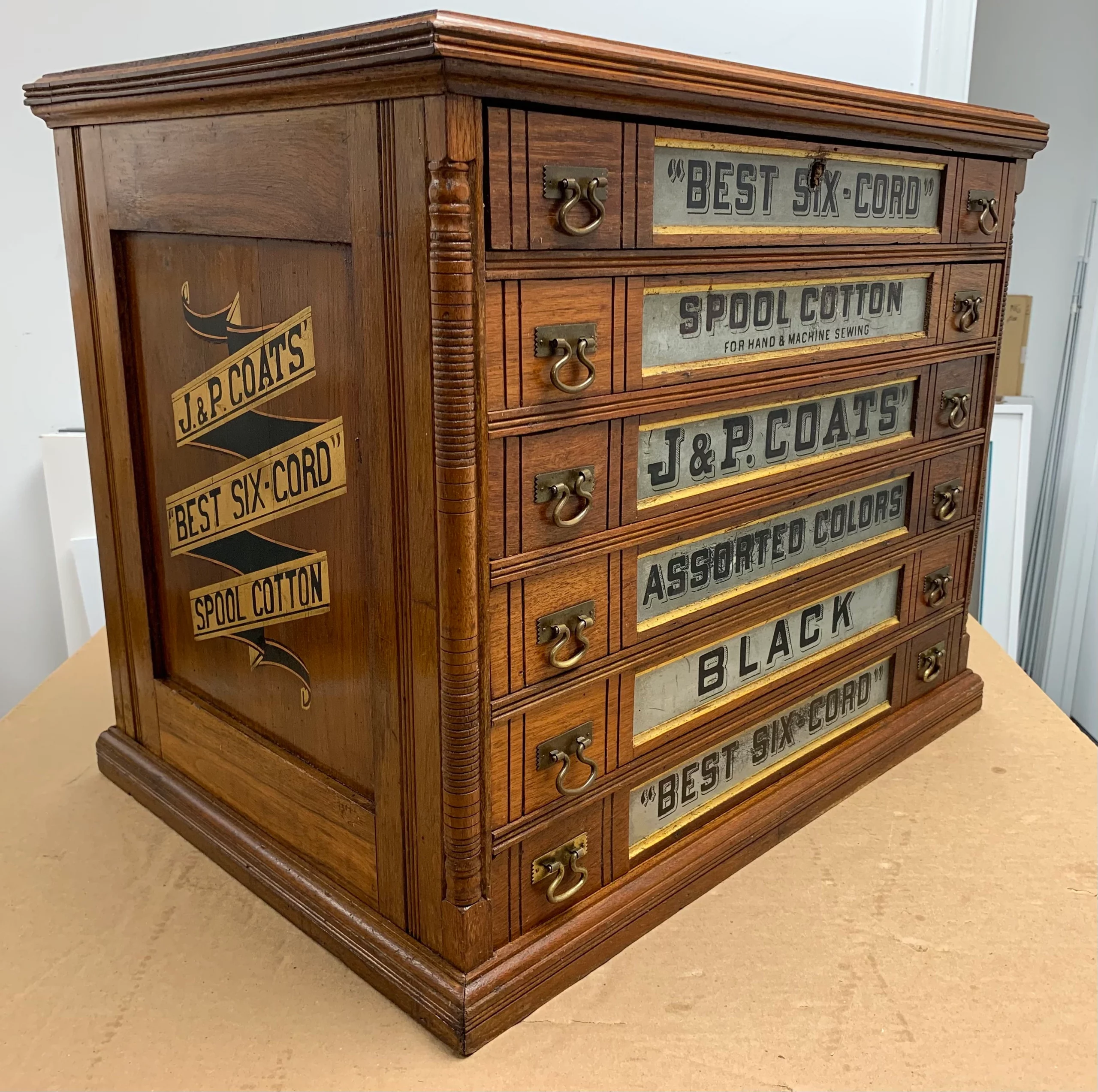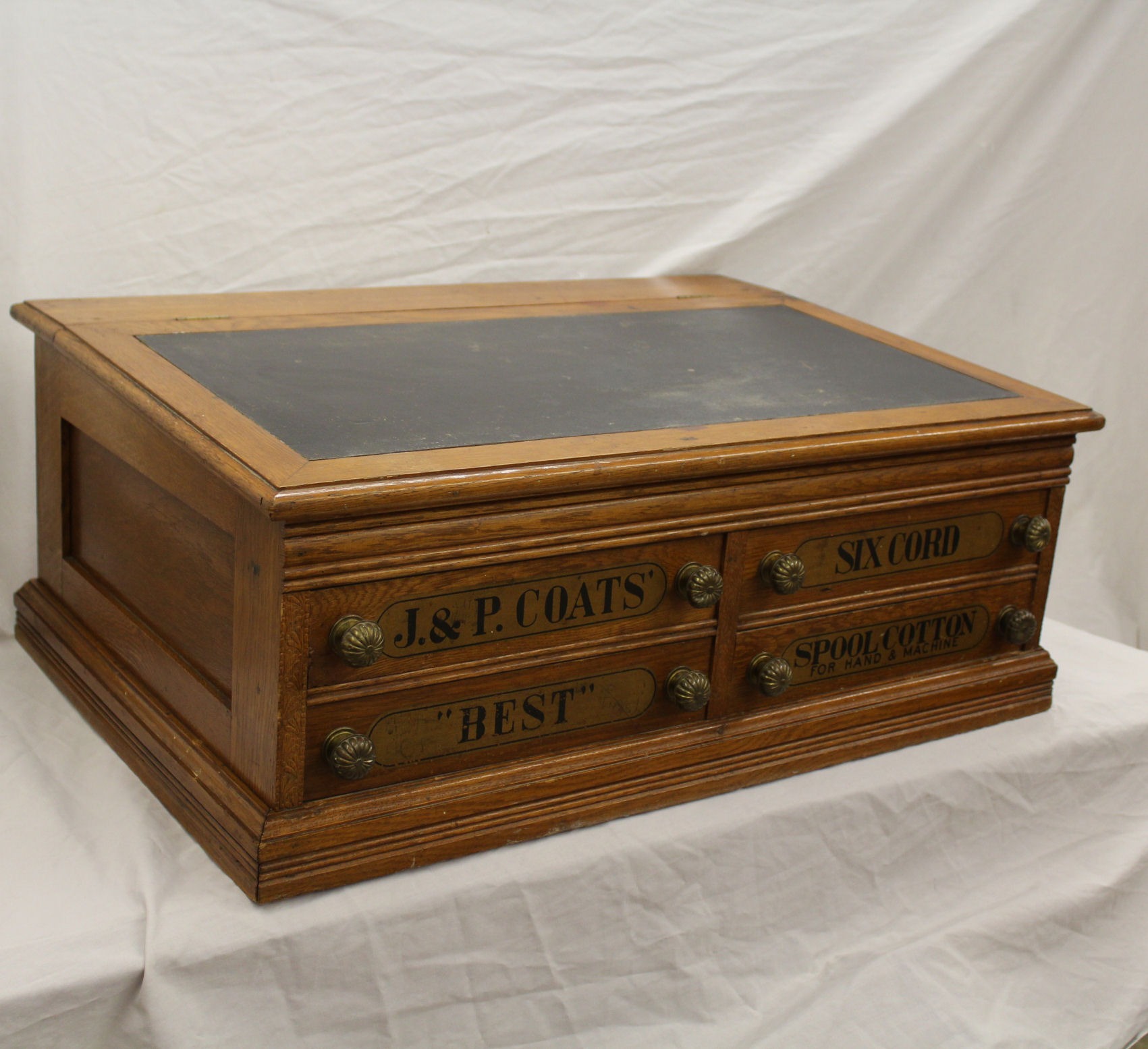Factors Influencing Antique Spool Cabinet Value

The value of an antique spool cabinet isn’t just about its age; it’s a complex equation factoring in several key elements. Understanding these factors is crucial for both collectors and those looking to sell or appraise their pieces. The right combination of features can elevate a simple cabinet into a highly sought-after collectible.
Wood Type’s Impact on Value
The type of wood used significantly impacts an antique spool cabinet’s value. Highly prized woods, due to their rarity, beauty, and durability, command higher prices. For example, mahogany, with its rich reddish-brown hue and lustrous finish, is consistently a top contender. Similarly, cherry wood, known for its warm tones and ability to age gracefully, is highly valued. Oak, especially quarter-sawn oak, is another strong performer, appreciated for its strength and striking grain patterns. Conversely, less valuable woods like pine or softwoods generally result in lower appraised values, unless other factors compensate for this. Rare and exotic woods, like rosewood or ebony (if authentically used and verifiable), can dramatically increase a cabinet’s worth, making it a true investment piece.
Cabinet Size and Construction Techniques
The size and construction of an antique spool cabinet directly influence its value. Larger cabinets, especially those with intricate detailing, are often more desirable and valuable. Construction techniques also play a critical role. Cabinets featuring robust joinery methods like dovetail joints and mortise and tenon joints are more durable and highly regarded than those assembled using simpler, less secure methods like nails or glue alone. Dovetail joints, known for their strength and aesthetic appeal, are a clear indicator of quality craftsmanship and command higher prices. A cabinet constructed with mortise and tenon joints, another traditional and strong method, also indicates superior build quality and longevity. In contrast, cabinets constructed with less-refined methods may fetch lower prices, reflecting their reduced durability and perceived craftsmanship.
Cabinet Condition and its Price Impact
The condition of an antique spool cabinet is paramount in determining its value. Original paint, even if showing some wear, is highly desirable and adds significant value. A cabinet in pristine condition, with its original finish intact and minimal wear, will command a significantly higher price than a similar cabinet that has been heavily restored or shows extensive damage. Conversely, a cabinet with significant damage, requiring extensive repairs, will have a substantially lower value. The following table illustrates the impact of condition on value:
| Condition | Description | Impact on Value | Example |
|---|---|---|---|
| Excellent | Original finish, minimal wear, no repairs | Highest value | A cabinet with original paint showing only minor, age-appropriate patina. |
| Good | Some wear, minor repairs, original finish mostly intact | Moderate value | A cabinet with some scratches and minor touch-ups to the finish. |
| Fair | Significant wear, noticeable repairs, original finish largely compromised | Lower value | A cabinet with significant paint loss and visible repairs, but structurally sound. |
| Poor | Extensive damage, requiring major repairs, original finish almost entirely gone | Lowest value | A cabinet with significant structural damage and requiring extensive restoration. |
Unique Features Enhancing Value, Antique spool cabinet value
Certain unique features can significantly boost an antique spool cabinet’s value. These details often point to the cabinet’s origin, maker, or historical context, making it a more desirable and valuable piece.
- Unusual hardware: Intricate or unusual hinges, latches, or drawer pulls can dramatically increase value.
- Inlay work: Intricate inlay work using contrasting woods or other materials adds significant aesthetic and monetary value.
- Maker’s marks or labels: Identifying the maker or origin of the cabinet through stamps, labels, or other markings can substantially increase its worth.
- Exceptional craftsmanship: Evidence of exceptional skill and artistry, beyond standard construction techniques, elevates value.
- Historical significance: Association with a particular historical period or event can significantly enhance a cabinet’s value.
Researching and Appraising Antique Spool Cabinets

Unlocking the secrets behind your vintage spool cabinet requires a blend of detective work and expert knowledge. This process, while demanding, can be incredibly rewarding, revealing the history and value hidden within your beautiful piece. Knowing where to look and what to look for is key to accurately assessing its worth.
Identifying the Maker or Manufacturer
Pinpointing the maker of your antique spool cabinet is crucial for establishing its provenance and potential value. Several avenues can be explored. First, examine the cabinet itself for maker’s marks, stamps, or labels. These might be subtly placed on the inside, the bottom, or even hidden within a drawer. Look closely for any inscriptions, even if they are faded or worn. Next, analyze the cabinet’s construction techniques and stylistic features. Certain joinery methods, wood types, and decorative elements were characteristic of specific regions, time periods, or manufacturers. Comparing these features to known examples in books, museum collections, or online databases can provide valuable clues. Resources like antique furniture books, specialized online forums (such as those dedicated to antique furniture or woodworking), and auction records can prove invaluable in this process. For example, comparing the hardware on your cabinet to those found in documented catalogs from the late 19th and early 20th centuries can lead to identifying the manufacturer.
Determining the Age of a Spool Cabinet
Dating your spool cabinet involves a multi-pronged approach combining visual inspection with historical research. Here’s a step-by-step guide:
- Visual Inspection: Carefully examine the cabinet’s construction, materials, and style. Note the type of wood, joinery methods (dovetail joints, mortise and tenon, etc.), hardware (hinges, handles, latches), and any decorative elements. Compare these features to known styles and techniques prevalent during different periods.
- Stylistic Analysis: Research the prevalent furniture styles during various historical periods. For example, Victorian-era cabinets often feature ornate carvings and dark, polished finishes, while Arts & Crafts pieces tend to be simpler and emphasize natural wood grains. Identifying the stylistic characteristics of your cabinet will narrow down the possible time frame of its creation.
- Historical Records: Consult historical records such as census data, property records, and family histories (if applicable) to potentially trace the cabinet’s ownership and origin. Local historical societies and archives can also be valuable resources.
- Provenance Research: If you know the cabinet’s history, documenting its previous owners and any sales or transfers can greatly enhance its value and provide a strong provenance.
- Expert Consultation: Consulting with an experienced antique appraiser or furniture expert can provide invaluable insights and confirmation of your findings. They can often identify subtle details and provide a more accurate dating.
Utilizing Reputable Sources and Professional Appraisers
Determining the value of your antique spool cabinet requires a cautious and informed approach. Relying on reputable sources and professional appraisals is crucial to avoid over- or under-valuing your piece. Online resources, while helpful for preliminary research, should be treated with caution, as accuracy can vary greatly. Consulting multiple sources and cross-referencing information is vital. Professional appraisal methods include:
- Formal Appraisal: A certified appraiser will conduct a thorough examination of the cabinet, considering its maker, age, condition, rarity, and market trends. This method offers the most accurate valuation but comes at a cost.
- Comparative Market Analysis: This involves researching similar spool cabinets that have recently sold at auction or through reputable dealers. This approach provides a general market value range, but might not account for unique features of your cabinet.
Formal appraisals offer the highest level of accuracy and credibility, especially when dealing with valuable antiques, but they also carry a higher cost. Comparative market analysis is more budget-friendly but may lack the precision of a formal appraisal.
Visual Characteristics of a High-Value Antique Spool Cabinet
A high-value antique spool cabinet often exhibits exceptional craftsmanship and desirable characteristics. Imagine a piece crafted from richly figured mahogany or cherry, its surfaces gleaming with a deep, lustrous patina. Intricate dovetail joinery, perfectly aligned and meticulously executed, would be evident throughout its construction. The hardware, perhaps hand-forged brass or elegantly turned wood, would be both functional and aesthetically pleasing, showing minimal signs of wear. The cabinet’s overall design might incorporate rare or sought-after stylistic elements, such as intricate marquetry, hand-painted details, or exceptional wood carving. Such a cabinet would likely be in excellent condition, showcasing its age gracefully with minimal damage or restoration. The combination of high-quality materials, superb craftsmanship, and a compelling history or provenance would significantly contribute to its desirability and overall value.
Presenting Information on Antique Spool Cabinet Value

Determining the value of an antique spool cabinet requires a nuanced understanding of various factors. It’s not a simple calculation, but rather a careful assessment of condition, rarity, maker, and aesthetic appeal. Collectors and enthusiasts often consult reputable sources and experienced appraisers to arrive at a fair market value.
Antique spool cabinet value – Several key elements significantly influence the price an antique spool cabinet commands. These factors, when considered together, paint a complete picture of its worth.
Condition and Restoration
The condition of the cabinet is paramount. Intact original paint, minimal wear, and the presence of all original hardware significantly increase value. Conversely, extensive damage, repairs, or repainting will lower the price. A cabinet with minor imperfections, well-preserved and showing its age gracefully, might still fetch a good price, while a heavily restored piece may be valued less, even if the restoration is expertly done. Consider this: a beautifully preserved spool cabinet from the early 1900s, with its original paint showing slight wear consistent with age, will generally command a higher price than a similar cabinet that has been completely repainted, obscuring its history and authenticity.
Maker and Origin
Knowing the maker and origin of the cabinet can dramatically impact its value. Cabinets crafted by renowned furniture makers or from specific regions known for their craftsmanship often sell for significantly more. For instance, a cabinet identified as being from a particular artisan workshop known for its high-quality materials and unique design elements will likely fetch a higher price than a similar, but anonymously made, piece. Documentation, such as old sales records or provenance, is incredibly valuable in establishing the maker and origin.
Style and Aesthetics
The style and aesthetic appeal of the cabinet play a crucial role in its value. Highly sought-after styles, such as those exhibiting intricate carving, unique hardware, or rare wood types, will command higher prices. A cabinet showcasing a distinctive style, perhaps representing a specific era or regional influence, might be more desirable and valuable than a more common or generic design. For example, a spool cabinet incorporating Art Nouveau elements might be valued more highly than a similar piece with a simpler, more utilitarian design.
Rarity and Demand
Rarity is a significant factor. The fewer examples of a particular type of spool cabinet exist, the higher its value is likely to be. High demand from collectors further increases the price. Consider a unique spool cabinet with an unusual design or a rare combination of features; its limited availability in the market could make it highly desirable and command a premium price.
Summary of Factors Affecting Antique Spool Cabinet Value
The value of an antique spool cabinet hinges on a complex interplay of factors, including its condition (originality, wear, and restoration), maker and origin (provenance and reputation), style and aesthetics (design elements and materials), and rarity and demand in the collector’s market. These elements must be considered holistically to arrive at a fair market valuation.
To accurately assess the value of your antique spool cabinet, consult with a reputable antique appraiser. Discover its true worth and unlock its potential.
Auction Catalog Entry Example
Item: Antique Spool Cabinet
Description: Early 20th-century spool cabinet, excellent condition, original paint with minimal wear, oak construction, ornate hardware. Possible maker: [Maker’s name, if known].
Dimensions: [Height] x [Width] x [Depth]
Condition: Excellent, minor surface wear consistent with age.
Estimated Price Range: $1,500 – $2,500
